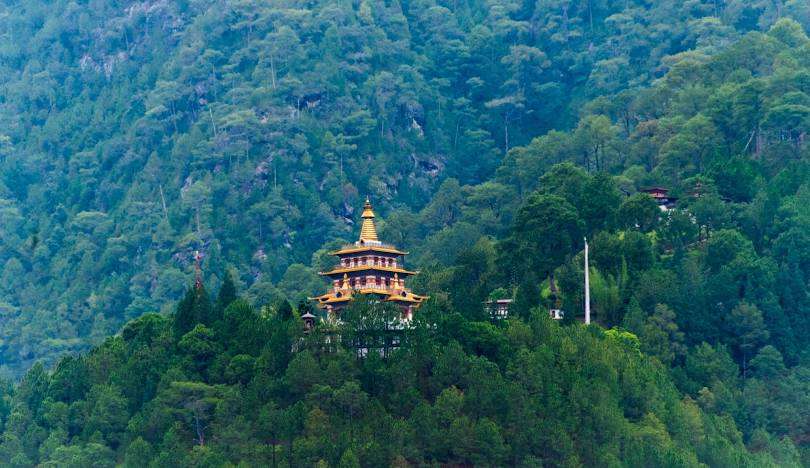
Table of Contents
Nestled in the eastern Himalayas, Bhutan is a land of enchantment that captivates visitors with its pristine natural beauty, rich cultural heritage, and unwavering commitment to happiness. This small kingdom, often referred to as the Last Shangri-La, has carefully preserved its traditions while embracing modernization, creating a unique blend of old and new that fascinates travelers from around the world. From ancient fortresses perched on mountain cliffs to serene valleys teeming with rare wildlife, Bhutan offers a wealth of experiences that will leave you in awe and longing to return.
As you get on with your journey through this remarkable country, you’ll discover that Bhutan is more than just a destination – it’s a transformative experience. The kingdom’s emphasis on Gross National Happiness, its dedication to environmental conservation, and its warm, hospitable people create an atmosphere unlike anywhere else on Earth. In this comprehensive guide, we’ll explore some of the best places to visit in Bhutan, helping you plan an unforgettable adventure in this extraordinary land.
Thimphu: The Heartbeat of Modern Bhutan
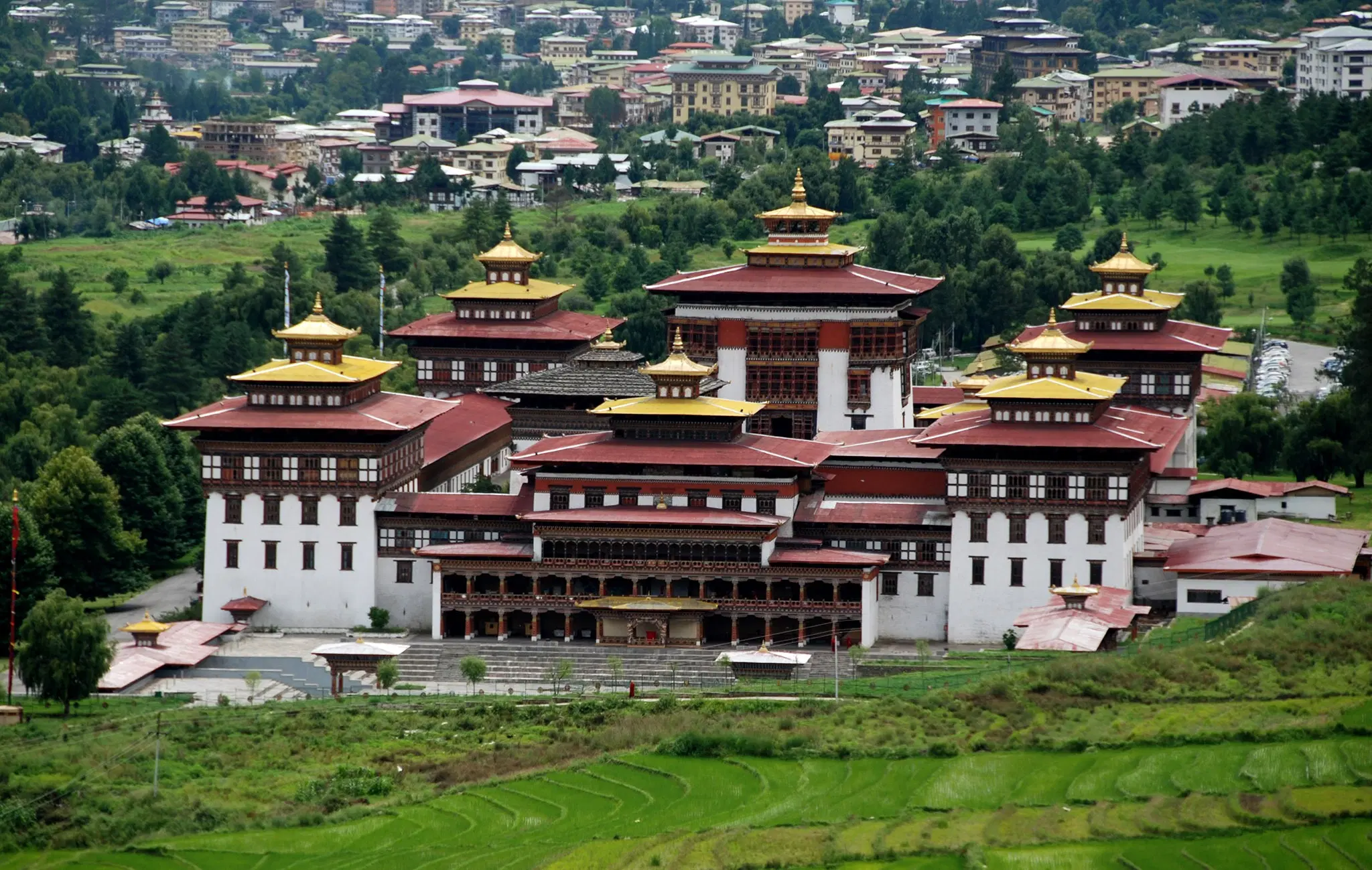
Your Bhutanese odyssey likely begins in Thimphu, the capital city that seamlessly blends centuries-old traditions with contemporary life. As you wander through its streets, you’ll be struck by the harmonious coexistence of ancient monasteries and modern cafes, traditional markets and chic boutiques. Thimphu serves as a perfect introduction to Bhutan’s unique culture and offers a wealth of attractions that shouldn’t be missed.
The Buddha Dordenma statue, a colossal 51.5-meter-high bronze figure, is one of Thimphu’s most impressive sights. Perched on a hilltop, this majestic Buddha overlooks the entire Thimphu valley, offering not only spiritual significance but also breathtaking panoramic views. As you stand in its presence, you’ll feel a sense of peace and wonder that sets the tone for your entire Bhutanese journey.
No visit to Thimphu is complete without exploring the magnificent Tashichho Dzong. This imposing fortress serves as the seat of Bhutan’s government and houses the throne room of the King. Its white-washed walls, intricate wood carvings, and golden roofs exemplify the finest of Bhutanese architecture. As you walk through its corridors and courtyards, you’ll gain insight into the country’s rich history and the importance of Buddhism in Bhutanese life.
For a deeper understanding of Bhutanese culture, make your way to the National Memorial Chorten. This striking white stupa, with its golden spires, was built in memory of the third King of Bhutan. Here, you’ll witness locals circumambulating the chorten, spinning prayer wheels, and offering prayers – a daily ritual that provides a glimpse into the spiritual life of the Bhutanese people.
To experience the vibrant pulse of local life, head to the Centenary Farmers Market on weekends. This bustling marketplace is a feast for the senses, offering a colorful array of fresh produce, local delicacies, and handicrafts. As you mingle with locals and sample unfamiliar fruits and vegetables, you’ll feel truly immersed in the everyday rhythms of Bhutanese life.
Paro: Gateway to Bhutan’s Wonders
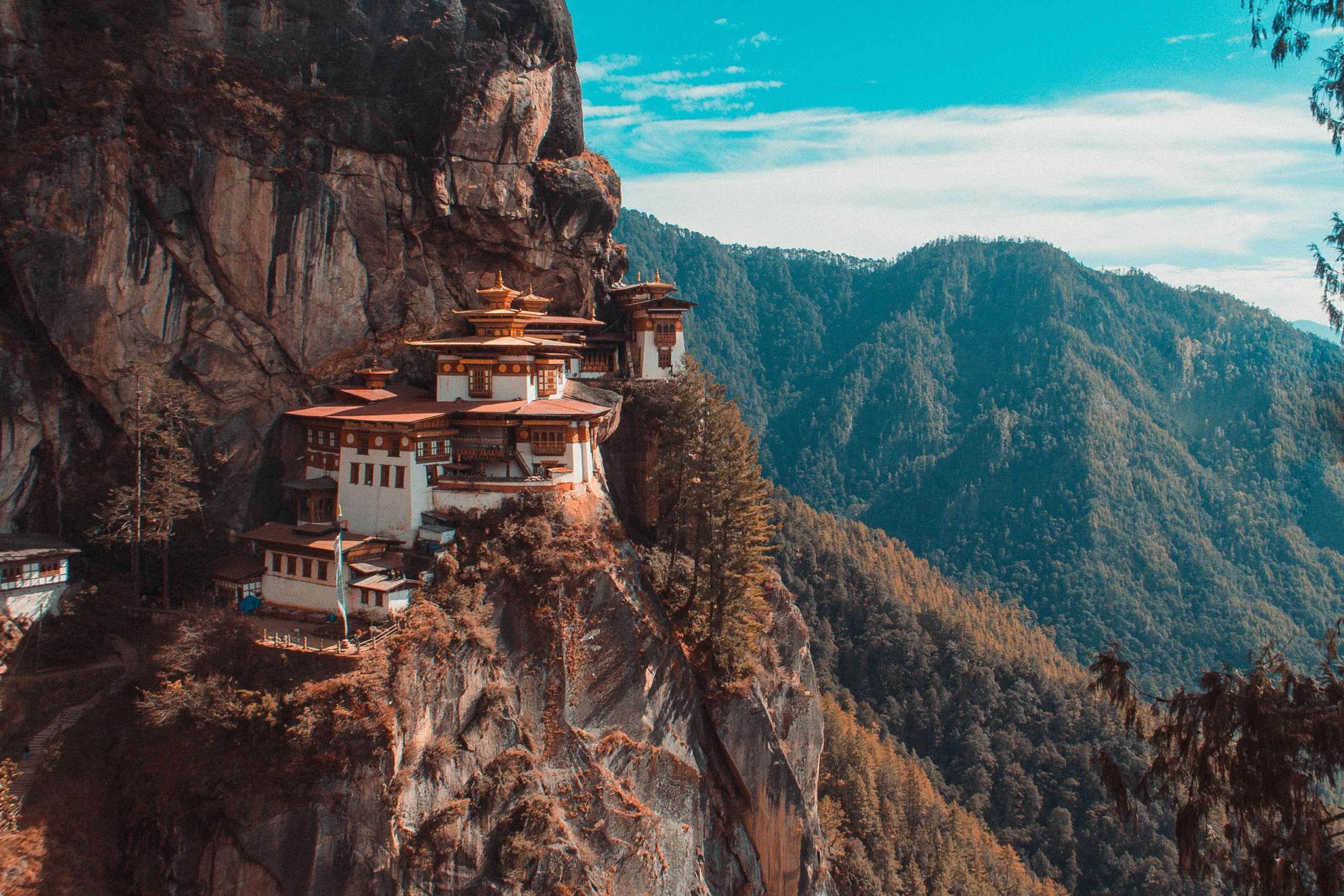
From Thimphu, your journey takes you to the picturesque Paro Valley, home to some of Bhutan’s most iconic attractions. This charming town, with its traditional Bhutanese architecture and surrounding emerald-green rice fields, serves as the gateway to the kingdom for most international visitors.
The crown jewel of Paro – and indeed, of all Bhutan – is the legendary Paro Taktsang, better known as Tiger’s Nest Monastery. Clinging to a sheer cliff face 900 meters above the valley floor, this sacred Buddhist site is a marvel of architecture and spiritual significance. The hike to Tiger’s Nest is challenging but immensely rewarding. As you ascend through pine forests adorned with colorful prayer flags, each step brings you closer to one of the most breathtaking vistas you’ll ever encounter. Upon reaching the monastery, you’ll be rewarded with not only spectacular views but also a profound sense of accomplishment and spiritual connection.
While Tiger’s Nest may be Paro’s most famous attraction, the town offers many other treasures waiting to be discovered. The impressive Rinpung Dzong, a fortress-monastery dating back to the 17th century, is a testament to Bhutan’s rich history and architectural prowess. Its massive walls, intricate murals, and ornate woodwork offer a fascinating glimpse into the country’s past.
For history enthusiasts, the National Museum of Bhutan, housed in an ancient watchtower, is a must-visit. Its extensive collection of Bhutanese art, artifacts, and natural history exhibits provides valuable insights into the kingdom’s cultural and natural heritage.
To connect with Bhutan’s ancient spiritual roots, pay a visit to Kyichu Lhakhang, one of the oldest temples in the country. Legend has it that this 7th-century temple was built to pin down the left foot of a giant demoness who was obstructing the spread of Buddhism. As you enter its peaceful courtyard and admire the ancient statues and paintings, you’ll feel a tangible link to Bhutan’s distant past.
Punakha: The Ancient Capital’s Timeless Beauty
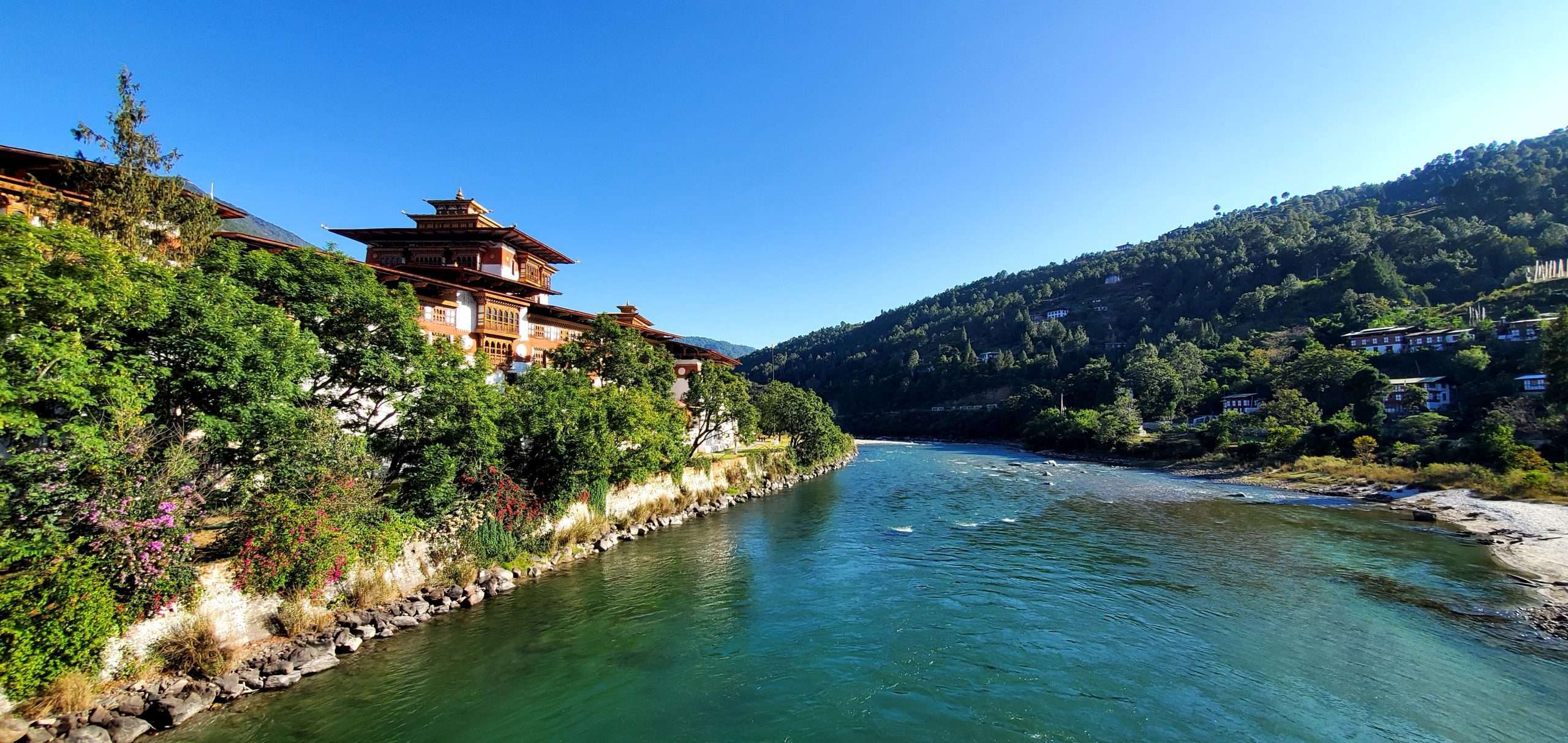
As you venture eastward from Paro, you’ll arrive in Punakha, the ancient capital of Bhutan. This beautiful valley, with its milder climate and lush vegetation, offers a stark contrast to the higher altitude regions you’ve explored so far.
The jewel in Punakha’s crown is undoubtedly the magnificent Punakha Dzong. Situated at the confluence of two rivers, this architectural masterpiece is often hailed as the most beautiful dzong in Bhutan. Its massive white walls, topped with red-and-gold roofs, create a striking image against the backdrop of blue skies and surrounding mountains. In spring, when the jacaranda trees lining the dzong burst into purple bloom, the scene becomes almost surreally beautiful. As you explore the dzong’s vast courtyards and ornate temples, you’ll understand why it has played such a crucial role in Bhutan’s history and continues to be a center of spiritual and administrative life.
For a unique cultural experience, make your way to Chimi Lhakhang, a temple dedicated to the Divine Madman, Drukpa Kunley. This 15th-century saint is known for his unconventional teachings and is associated with fertility blessings. The short walk to the temple takes you through picturesque rice fields and traditional farmhouses, offering a glimpse of rural Bhutanese life.
To truly appreciate the natural beauty of the Punakha Valley, take a hike to the Khamsum Yulley Namgyal Chorten. This elaborate temple, perched on a ridge above the valley, offers panoramic views that will take your breath away. The sight of the winding Mo Chhu river snaking through the lush valley, framed by terraced rice fields and distant mountains, is one that will stay with you long after your Bhutanese adventure ends.
Bumthang: The Spiritual Heart of Bhutan
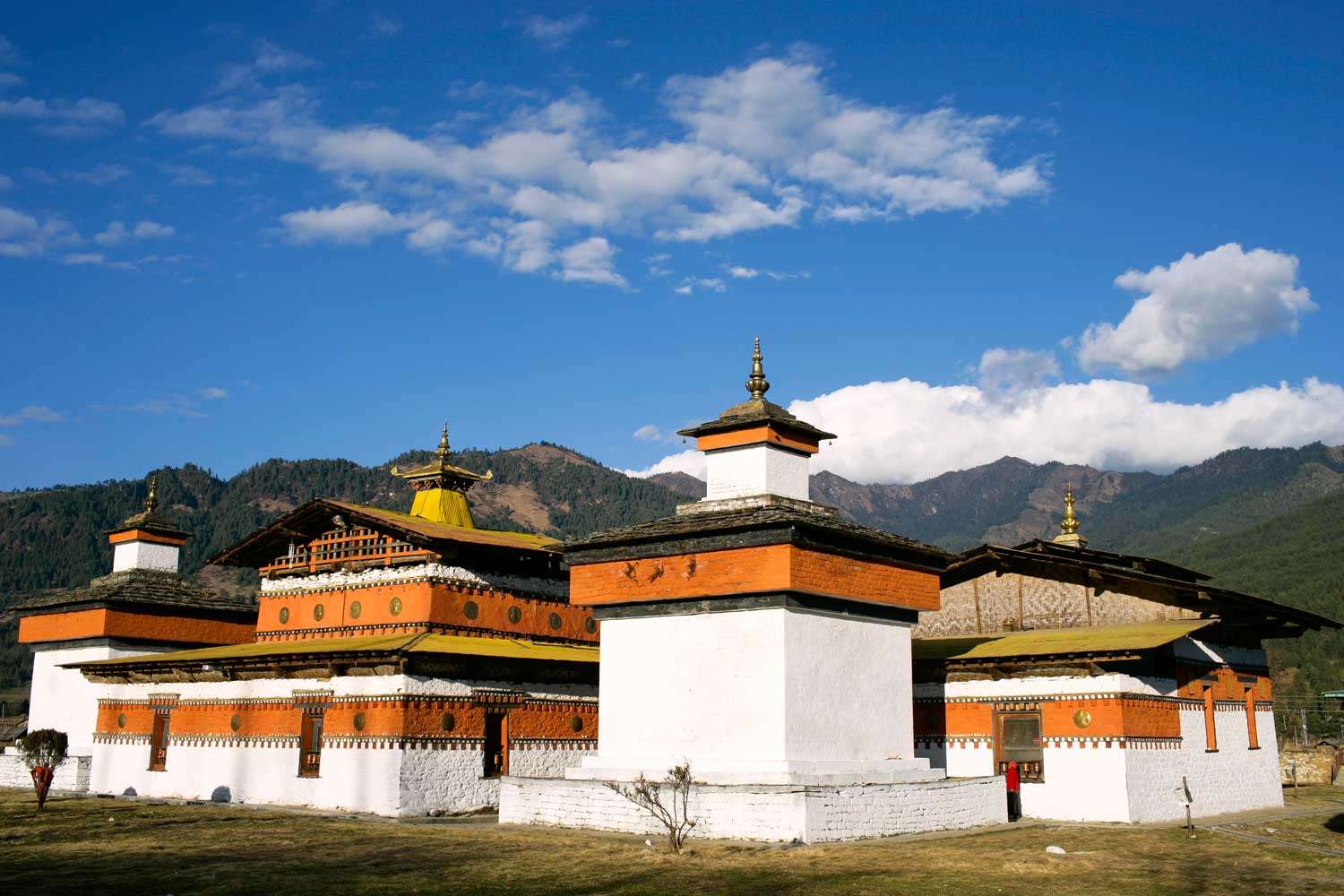
As you journey deeper into Bhutan, you’ll reach Bumthang, a region comprising four valleys that is often referred to as the spiritual heartland of the country. This area is steeped in myth and legend, home to some of the oldest and most sacred Buddhist sites in Bhutan.
One of the most significant temples in Bumthang is Jambay Lhakhang, said to be one of 108 temples built in a single day by the Tibetan king Songtsen Gampo in the 7th century. As you step into this ancient sanctuary, you’ll feel the weight of centuries of devotion and spiritual practice. The temple’s simple exterior belies the rich treasures within, including ancient statues and intricate murals that tell the story of Buddhism in Bhutan.
Nearby, Kurje Lhakhang complex stands as a testament to Guru Rinpoche’s enduring influence in Bhutan. This revered site is where Guru Rinpoche is said to have left an imprint of his body on a rock after subduing a local demon. The complex consists of three temples, each with its own significance, surrounded by 108 chortens. As you explore these sacred grounds, you’ll gain a deeper appreciation for the spiritual foundations of Bhutanese culture.
Bumthang is not only about ancient temples; it’s also a place where you can experience Bhutan’s living traditions. Visit Tamshing Lhakhang, founded by Bhutan’s great religious treasure discoverer, Pema Lingpa. Here, you can try on a 25-kilogram chain mail that pilgrims wear while circumambulating the temple – it’s said that carrying this weight during your circuit of the temple will cleanse you of a lifetime of sins.
For a taste of Bhutan’s burgeoning craft beer scene, make a stop at the Swiss Guest House. This unexpected gem offers locally brewed red rice beer, providing a delightful fusion of Bhutanese ingredients and European brewing traditions.
Phobjikha Valley: A Haven for Nature Lovers

From the spiritual heights of Bumthang, your journey takes you to the serene Phobjikha Valley, a wide glacial valley that serves as a critical conservation area. This pristine landscape is most famous for being the winter home of the endangered black-necked cranes, which migrate from Tibet each year.
The arrival of these majestic birds in late October is cause for celebration among the local people, who view the cranes as harbingers of good fortune. If you’re lucky enough to visit during the winter months, you can observe these rare birds from the Black-Necked Crane Information Centre, which offers high-powered telescopes for visitors.
Even if you miss the cranes, Phobjikha Valley offers a wealth of natural beauty and cultural experiences. The 17th-century Gangtey Monastery, perched on a hilltop overlooking the valley, provides both spiritual enrichment and stunning views. Take a moment to sit in quiet contemplation in the monastery’s courtyyard, absorbing the peaceful atmosphere and breathtaking scenery that surrounds you.
For those who love to explore on foot, Phobjikha Valley offers excellent hiking opportunities. The Gangtey Nature Trail, a gentle 5-kilometer path that winds through the valley floor, allows you to immerse yourself in the area’s unique ecosystem. As you walk, keep an eye out for diverse flora and fauna, including sambar deer, Himalayan black bears, and a variety of bird species.
To truly connect with local culture, consider a homestay in one of the valley’s traditional farmhouses. This experience offers an unparalleled opportunity to participate in daily Bhutanese life, from helping with farm chores to learning how to cook local dishes. The warmth and hospitality of your hosts will leave you with a deep appreciation for the Bhutanese way of life.
As your journey through Bhutan comes to an end, you’ll find that this remarkable kingdom has left an indelible mark on your heart. The breathtaking landscapes, from snow-capped peaks to lush valleys, will have filled your camera roll and your memories. The ancient temples and monasteries will have offered glimpses into a rich spiritual tradition that continues to thrive in the modern world. And the genuine warmth and happiness of the Bhutanese people will have shown you a different way of measuring the quality of life.
Bhutan is more than just a travel destination; it’s a place that challenges your perceptions and invites you to see the world through a different lens. The kingdom’s commitment to preserving its cultural heritage while carefully embracing progress offers valuable lessons for the rest of the world. As you return home, you’ll carry with you not just souvenirs, but a renewed sense of what’s truly important in life.
Whether you’re seeking spiritual enlightenment, cultural immersion, natural beauty, or simply a break from the frenetic pace of modern life, Bhutan offers it all. This land of happiness leaves an enduring impact on all who visit, inspiring a desire to return and explore more of its wonders. As you plan your Bhutanese adventure, remember that each destination in this magical kingdom has something unique to offer, contributing to an experience that is truly greater than the sum of its parts.
So pack your bags, open your heart, and prepare for a journey that will transform your perspective and enrich your soul. Bhutan awaits, ready to share its treasures and its wisdom with those fortunate enough to visit. Your adventure in the Land of the Thunder Dragon promises to be nothing short of extraordinary.



I recently read your blog on the best places to visit in Bhutan. It was incredibly well-written, and I gained a lot of valuable knowledge. Thank you for sharing such insightful information!